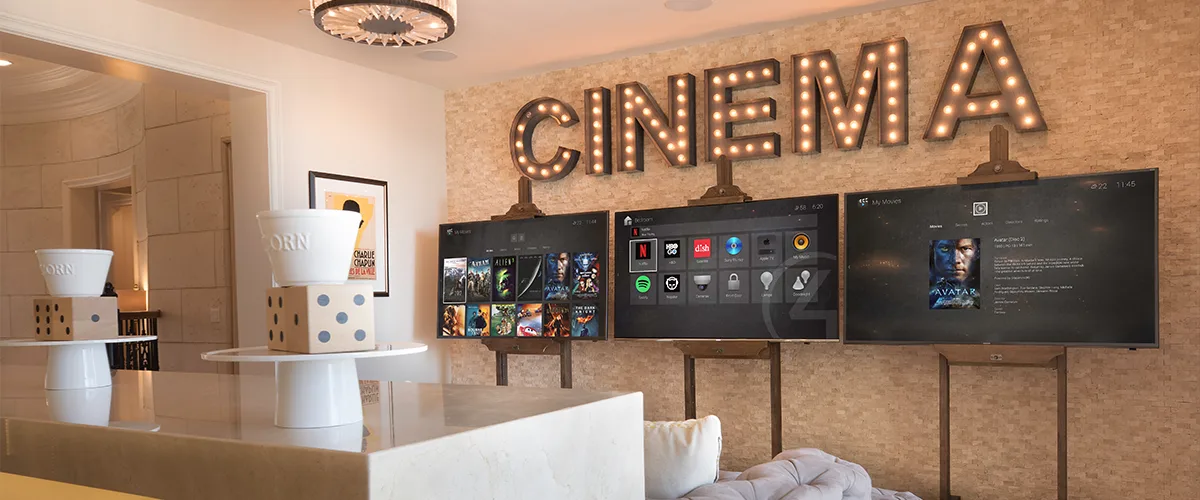You’ve seen the giant rooms converted into home theaters with all the bells and whistles, and maybe you feel that such a luxury is out of reach for your home space or budget. However, with the help of our experts, it’s easier than you think to convert a small space into the home theater of your dreams.
Consider the size of your room to determine what equipment will work best for your home theater. You don’t need a screen so large that you’re left straining your neck or a projector with a poorly lit image that fights with the light from your windows. Keep five things in mind once you determine your dimensions:
Seating distance
Your seating distance will determine the appropriate screen size for your home theater by multiplying your seating distance by 0.84. Let’s say you have 6 feet (72 inches) between your couch and where your screen will be. By multiplying 72 by 0.84, we determine a 60-inch screen would be an ideal size that brings you into the story without overwhelming your eyes.

Number of speakers
Now you should determine how many speakers you have space for, so you can choose your wiring setup. While many home theaters utilize 7 speakers, a smaller home theater only needs five speakers and you can embed them in the walls and ceiling to maximize space. However, we recommend installing wiring for 7 speakers in case you decide to expand in the future.
Receiver
It’s easier to fill a small home theater with enveloping sound. Your receiver powers your speakers. When you’re shopping for your receiver, inquire about the unit’s power supply so you can determine the appropriate amount of power for your home theater.
Display type
Don’t assume that HD and 4K are limited to giant screens; this level of quality is available for smaller displays too. Take ambient light into account as well; an LCD TV will ensure you see a vivid screen image even if there are windows casting light into the room. For a windowless room, a projector can offer a crisp image and fits perfectly in a smaller budget. Furthermore, you only need a white wall instead of purchasing a screen.

Projector
If a projector will create your ideal “screen,” here are some aspects to focus on while you determine the best fit for you:
Lens Shift simplifies the installation process by improving your projector placement’s flexibility. This is necessary for the best home theater setup; we recommend going with a projector that has both vertical and horizontal lens shift.
Most projectors are equipped with an auto-iris, which deepens blacks and brightens lights within the film. A home theater with total light control doesn’t require an auto-iris, but if you have a multipurpose room or a room with windows, a high-quality auto iris is a necessity. Do some research beforehand as cheaply made auto-irises can create a noisy projector.
ANSI lumens determines your overall projector brightness. The higher the lumens, the brighter your image will be. Evaluate your room’s lighting before choosing a projector, because a value that’s too high can create washed-out brights and blacks. Most projectors come equipped with at least 2,000 lumens, but home theater units below 1,500 aren’t enough for a brighter room.
No matter the size of your home theater, proper planning is vital to keep you anticipating the next movie night. As you begin to determine these five appropriate areas of a small home theater, our team of experts at Audio Video Concepts are ready to make your dreams of owning a home theater a reality. Contact us today to get started.



